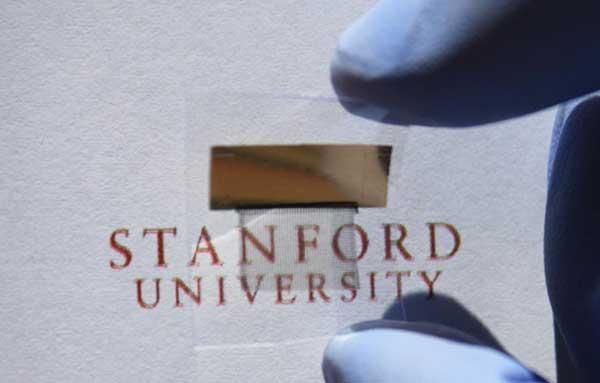Transparent Batteries Help Mobile Devices Go See-Through

Just as televisions have evolved from box sets to flat screens and telephones have progressed from booths to mobiles, imagine batteries so inconspicuous that one can see right through them.
Scientists have now invented clear, flexible batteries that, when sandwiched together with similarly transparent video displays, touch screens, microchips and solar cells, might help lead to entirely see-through mobile devices. For instance, one might imagine tablet computers with clear bodies that can superimpose images onto whatever you see through them for augmented reality applications.
The new invention is a novel type of lithium-ion battery, the kind now popular in consumer electronics because of how much power it can store. To key to making such a battery appear transparent involved miniaturizing its opaque parts until they are too small to be seen with the naked eye and then spreading them apart so they only cover a small portion of a see-through backing.
Researchers first created a flexible silicone rubber membrane with a grid of trenches each 35 microns or millionths of a meter wide patterned onto it. In comparison, the human eye can only make out details 50 to 100 microns in size.
The scientists then filled the trenches with a water-based slurry containing lithium-ion battery materials. Electric current moves from trenches of lithium titanate spinel, which form the negative electrode, across a gel to trenches of lithium manganese oxide, which make up the positive electrode. A gold film deposited onto this silicone rubber helps collect this electric current to power electronics.
"The transparent batteries here open up exciting opportunities for transparent electronics — for transparent cellphones, laptops, iPads," researcher Yi Cui, a materials scientist at Stanford University in California, told InnovationNewsDaily. "Cool and beautiful."
The more batteries there are stacked atop each other, the more energy they store collectively but the less transparent they are overall. Still, in theory, the researchers suggest they could make a flexible transparent lithium-ion battery that is 60 percent transparent with energy storage comparable with commercial lead acid and nickel-cadmium rechargeable batteries.
Sign up for the Live Science daily newsletter now
Get the world’s most fascinating discoveries delivered straight to your inbox.
So far, the researchers have made batteries of varying transparency that fall short of the theoretical maximum. By further tinkering with the battery's structure — for instance, making the silicone rubber layer thinner and the trenches deeper — the researchers suggest they can bump up the energy storage capacity.
The scientists detailed their findings online July 25 in the Proceedings of the National Academy of Sciences.
This story was provided by InnovationNewsDaily, a sister site to Live Science. Follow InnovationNewsDaily on Twitter @News_Innovation, or on Facebook.












